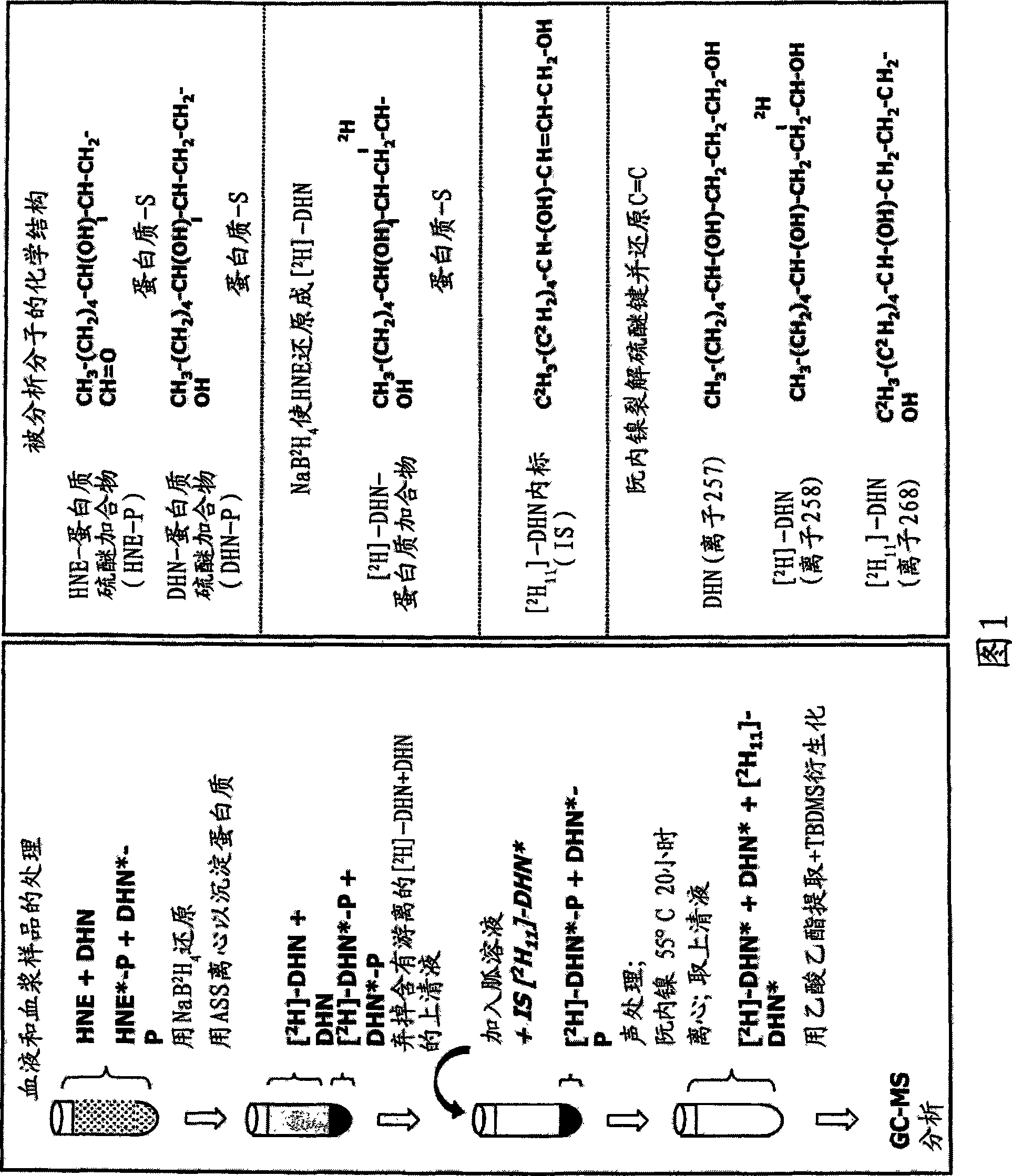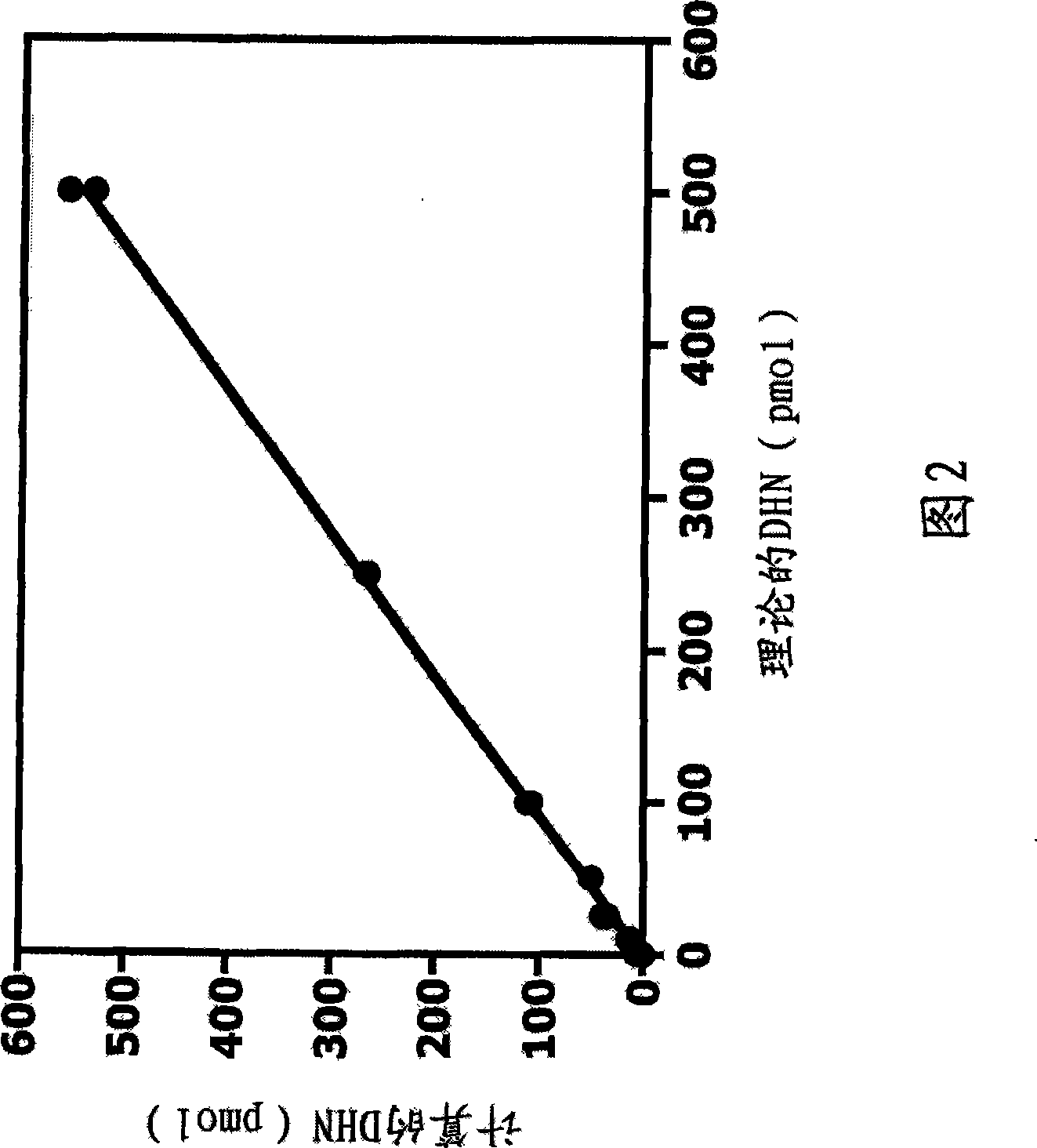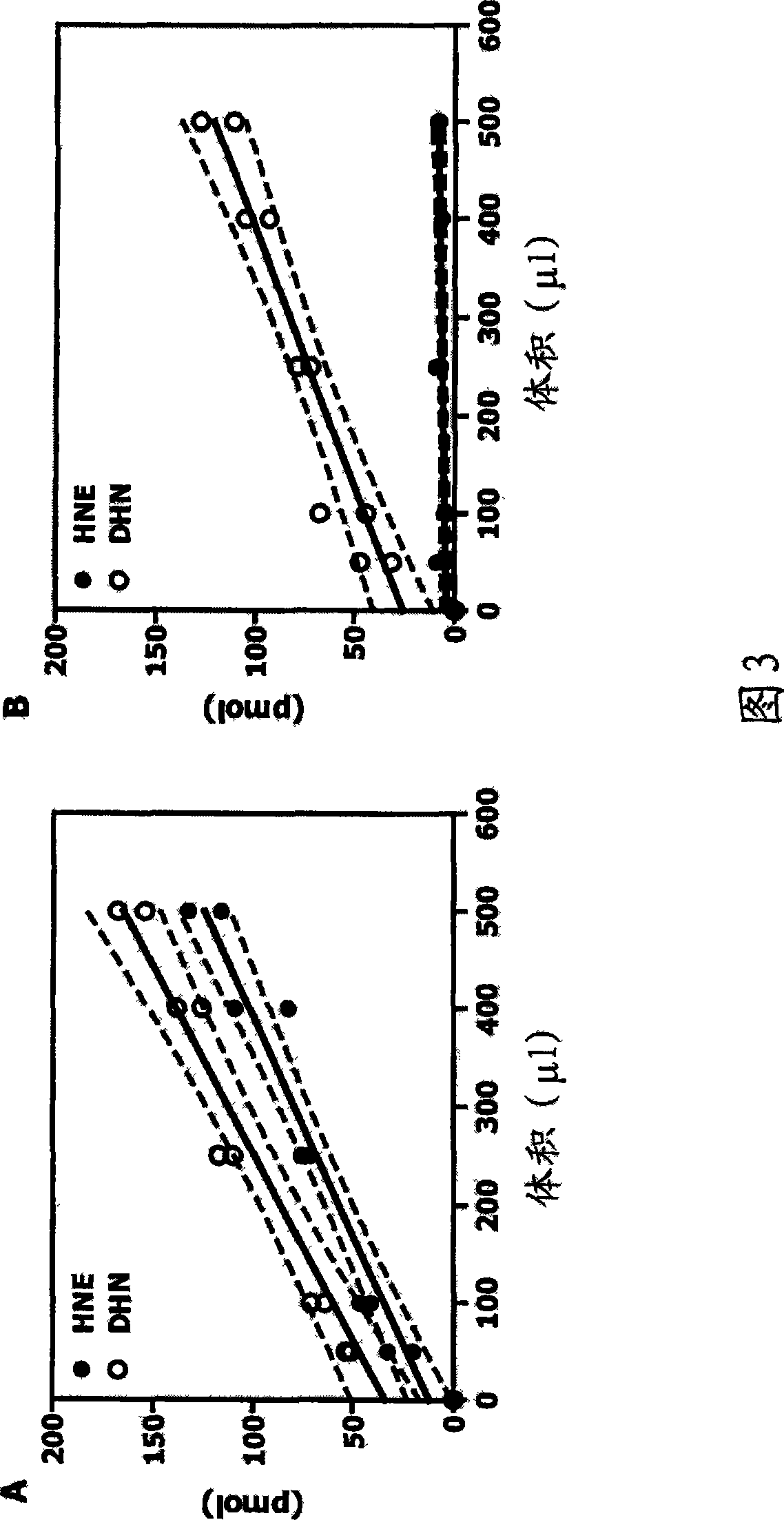Method for detecting a biomarker of oxidative stress in a biological sample
A biomarker and biological sample technology, applied in the field of detection of oxidative stress in biological samples, can solve problems that have not been described
- Summary
- Abstract
- Description
- Claims
- Application Information
AI Technical Summary
Problems solved by technology
Method used
Image
Examples
Embodiment 1
[0051] Conduct an assay to quantify NaB 2 h 4 HNE and its inactive metabolite 1,4-dihydroxynonene (DHN) bound to thiol protein adducts after Raney nickel treatment. The levels of these adducts were measured in blood, plasma collected from 7, 15, 22 and 30 week old SHR and control Wistar rats. Disease (SHR) and age (p<0.0001 for both) significantly increased the levels of protein-bound HNE quantified at nanomolar levels with relatively high accuracy in blood but not plasma. Compared with Wistar rats, 22- and 30-week-old SHRs showed higher blood levels of HNE-protein adducts. Protein-bound DHN levels detected in blood and plasma were not affected by disease or age. Taken together, the results of this study in an animal model of cardiomyopathy demonstrate that changes in blood HNE-protein thioether adducts with disease progression and aging can be assessed with high accuracy by the described GCMS method. It is expected that this method will be used to assess the occurrence an...
Embodiment 2
[0053] Another experiment was performed to evaluate the role of 4-hydroxynonenal (HNE) in oxidative stress-related diseases. Further, based on the discovery of high circulating HNE-protein thioether adducts (HNE-P) in essential hypertensive rats (SHR), the purpose of this study was to find out the correlation between HNE-P and cardiac function properties and to examine the effects of antioxidant treatment.
[0054] Eighteen-week-old SHRs (9 rats / group) were administered daily (i.p.) the lipid peroxidation inhibitor probucol (10 mg / kg / day) or vehicle (corn oil) for 4 weeks. Cardiac function was assessed by echocardiography and HNE-P by GCMS.
[0055]Changes (p<0.05) in left ventricular diastolic (increased isovolumic relaxation time) and compliance (increased E-wave deceleration rate, EDR) indices reflected worsening diastolic dysfunction in SHRs receiving vehicle. High circulating HNE-P was associated with diastolic dysfunction (EDR: R2=0.518; p<0.001) and heart rate (R2=0.2...
Embodiment 3
[0057] In the next example, the method for the determination of protein-bound HNE in myocardial tissue using quantitative GCMS [18] was modified to enable accurate and reproducible continuous assessment of low levels of these adducts in blood samples. Specifically, this method quantifies HNE and its inactive metabolite DHN bound to thiol proteins. However, in alternative embodiments of the invention, oxidative stress may be quantified with any other suitable substance, such as any other metabolite of an aldehyde produced by fatty acid peroxidation. HNE-protein thioether adducts and DHN-protein thioether adducts are considered representative of the class of aldehyde-protein adducts and aldehyde metabolite-protein adducts.
[0058] In general, the method involves: (i) by reduction to its deuterated alcohol [ 2 H]DHN to stabilize HNE, (ii) treatment with Raney nickel to cleave the thioether bond, releasing protein-bound DHN and [ 2 H]DHN(HNE), and (iii) using deuterated interna...
PUM
 Login to View More
Login to View More Abstract
Description
Claims
Application Information
 Login to View More
Login to View More - R&D
- Intellectual Property
- Life Sciences
- Materials
- Tech Scout
- Unparalleled Data Quality
- Higher Quality Content
- 60% Fewer Hallucinations
Browse by: Latest US Patents, China's latest patents, Technical Efficacy Thesaurus, Application Domain, Technology Topic, Popular Technical Reports.
© 2025 PatSnap. All rights reserved.Legal|Privacy policy|Modern Slavery Act Transparency Statement|Sitemap|About US| Contact US: help@patsnap.com



